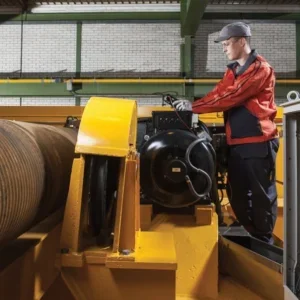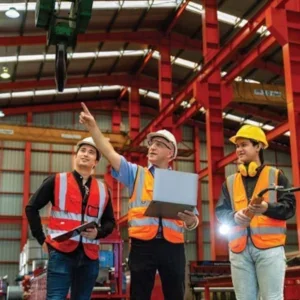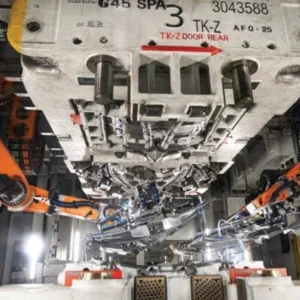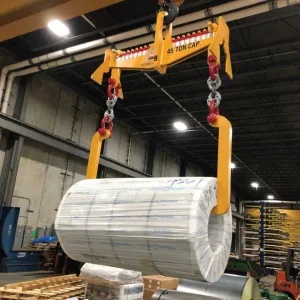
Lifting appliances are mechanical devices designed to lift, move, or position heavy loads with minimal manual effort. They are widely used in industries where heavy materials are moved such as construction, manufacturing, shipping, and logistics. Cranes, hoists, winches, elevators and jacks are just some examples.
In the most basic case, a lifting appliance provides a mechanism which can lift a load only, such as a chain hoist.
For most applications, however, it is necessary to both lift and move loads and many lifting appliances provide a means of doing this. With the use of a simple structure, such as a runway with trolley, it becomes possible to move the chain hoist whilst it is supporting the load, but movement is limited to a single plane. A more complicated structure such as an overhead travelling crane or crawler crane allows the load to be raised and moved in any plane.
There are three distinct areas within the heading of lifting appliances, the first being mechanisms, for example chain hoists. Mechanisms lift the load and/or in some cases provide a means of moving the load when used in conjunction with other appliances. Static structures is the second area. In themselves they are incapable of carrying out a lifting operation unless fitted with a mechanism – an example being a mobile supporting structure.

These are structures that provide a means of supporting a lifting mechanism and may provide a track on which the machine can move in a single plane. The third area covers moving structures that, when fitted with a mechanism, can carry out lifting and moving operations in any plane, such as a tower crane.
Lifting appliances may be manually or power operated or they could be a combination of both. This gives the user making a selection options to carefully consider. If selecting power operated equipment, then the type of power (electric, pneumatic or hydraulic?) and its provision needs to be considered.
Mechanisms will require some form of supporting structure or suspension point. Several options exist to allow the lifting mechanism to be mounted on the supporting structure. Where the lifting mechanism is designed to be suspended from a fixed suspension point or trolley, they are available with hook, eye or shackle top fittings or they may have mountings which allow them to be directly bolted into position. Where the mechanism is designed to run on a track, such as a runway, they are available with built-in trolley arrangements. Guidance in this respect is given in the specific sections of the LEEA Code of Practice for Safe Use of Lifting Equipment (COPSULE).
SELF-SUSTAINING
An important feature of any lifting mechanism is that it should be selfsustaining. This means it will support the load at any position throughout the lift without the application of effort by the operative. An exception to this requirement is sometimes made in the case of pulley blocks where the effort is applied by hand, but special care should be taken – see section 1A6.3.2.1 of the LEEA COPSULE for further guidance.
Some types of manually operated winch and jacks achieve the self-sustaining properties by a low back drive efficiency. Hydraulic jacks use non-return valves to control the flow of oil and thus sustain the load. In other cases it is normal to incorporate a brake into the design of the lifting appliance. These may be friction brakes or incorporate a ratchet and pawl. The brakes used in the construction of power operated equipment are usually arranged so that the brake is released when power is supplied to the motor. Devices are used to apply the brake so that when the power supply is terminated, either intentionally or accidentally, the brake operates to sustain the load. In this way, the braking mechanism is failsafe and arrests the downward movement of the load in the shortest possible time.
Whether or not brakes are incorporated into travel motors will depend on the design, use and intended duty. They may not be fitted as standard but are usually available as optional extras. Travel brakes do not instantly arrest the travel but apply slowly so as avoid causing the load to swing. This feature must be borne in mind when applications call for precise load positioning and when setting automatic stopping devices.
The range of standard equipment available and the flexibility of many lifting appliances for adaptation for specific duties makes selection a matter for careful consideration. LEEA members will offer advice and assist in the selection of suitable equipment for both general and specific applications.






